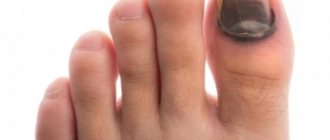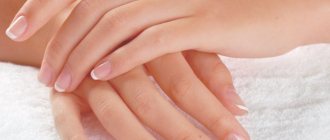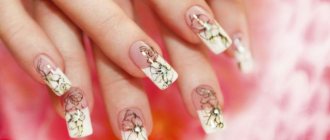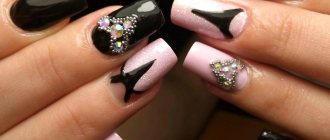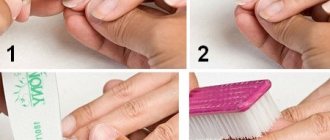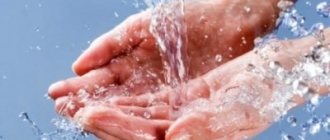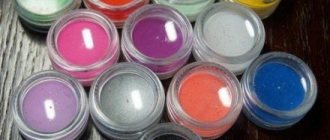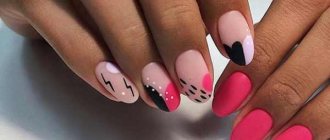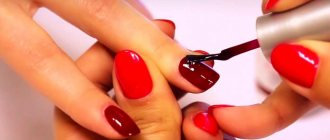One of the first questions for a patient with onychomycosis (nail fungus) is:
Why is it not enough to treat an onychomycosis infection only by a dermatologist and mandatory observation by a podologist is recommended?
Who is a podiatrist and how can he help me?
What is the difference between a pedicurist and a podiatrist?
At first glance, everything sounds complicated and confusing with new terms that it seems impossible to restore a healthy nail plate again, but with the correct diagnosis and strict adherence to the recommendations of the podologist and dermatologist, positive dynamics are gradually observed.
Onychomycosis infection is an unpleasant phenomenon. If only the first signs of damage appear, you should immediately contact a specialist: a podologist and a dermatologist. Conduct a series of laboratory tests to confirm the diagnosis.
The first signs may be:
- Change in color of the nail plate. First, in a small area in the area of the distal edge or on the sides of the lateral and medial zones.
- Thickening of the nail plate.
- Unpleasant smell.
- The appearance of yellow-brown longitudinal arrows on the nail with elements of “gas shooting”.
Why is it so important when treating an onychomycosis infection by a dermatologist to also be under strict supervision by a podologist?
A podiatrist is a highly specialized specialist in providing pre-medical manipulations related to nails and feet:
- Medical cleaning of nails affected by fungal infection (onychomycosis);
- Non-surgical removal of core calluses;
- Hygienic hardware treatment of the periungual space and feet;
- Medical treatment for diabetic foot care;
- Correction of ingrown, deformed and injured nails using the Fraser bracket corrective system;
- Manufacturing of a custom orthosis for hammertoes and hallux valgus.
Medical cleaning of nails with a confirmed diagnosis of onychomycosis is podological care, which is not treatment in the classical medical sense; the technique completely eliminates a number of risks, which is typical of classical treatment.
This procedure allows you to quickly and painlessly clean off the entire infected nail surface down to healthy tissue, which subsequently allows direct penetration of drugs prescribed by a dermatologist.
Without onychomycosis cleaning in the podiatrist’s office, the effect of all prescribed drugs is practically zero!
What is the difference between a pedicurist and a podiatrist?
The task of a salon pedicurist is to wash the feet, remove excess cuticles, apply a perfectly colored coating with a design and file the foot. This type of service refers to SPA procedures. The office is decorated and aimed at relaxing the client. When contacting a salon for help in solving any problem on the nails and feet, the salon technician does not have sufficient knowledge, experience, proper equipment and tools.
The podiatrist's treatment room fully complies with sanitary standards of SanPiN. Knowledge, experience and practice allows a specialist podiatrist to solve almost all problems associated with nails and feet. By combining various paramedical techniques, positive dynamics are always observed. Only professional tools and equipment are used in the work. Specialization is exclusively aimed at restoring the function and health of nails and feet.
In the problem of onychomycosis infection, the main task of the podologist is to rid the patient of fungal microflora, while restoring a healthy nail plate.
Who is a podiatrist?
A specialist with a medical education who specializes in pathologies of the foot and nail plate is a podiatrist. The doctor works at the intersection of two areas, surgery and dermatology. The doctor must simultaneously be able to cope with problems of the skin and nail plate using conservative methods, as well as provide prompt assistance - for example, if a patient comes to him with an ingrown nail, etc.
Cleo Line employs qualified specialists with many years of experience who are constantly expanding their knowledge and skills. Podologists at our center use modern diagnostic and treatment methods, which allows us to cope with any problem as effectively as possible in a short time.
Area of specialization
So that you can understand which doctor to contact with a particular problem of horny formations, you need to understand the area of specialization of the listed doctors. Thus, mycologists, podologists and dermatologists treat the following problems:
- mycoses (the doctor treats nail fungus on the toes, hands and skin);
- thickening, brittleness and deformation of the nail plates;
- the initial stages of an ingrown toenail;
- rashes and dermatitis of various origins;
- skin viral infections;
- diseases of the sweat and sebaceous glands.
If we talk about the surgeon, then this doctor deals exclusively with surgical treatment of ingrown toenails. For all other problems with horn formation on the fingers, it is better to immediately contact a dermatologist. This physician can conservatively treat even an ingrown nail at the initial stage, when there is only inflammation of the periungual fold, but there is no suppuration yet.
When to contact a podiatrist
Help is required in several cases. This could be a nail injury, a desire to get a neat pedicure, or get rid of calluses and corns. Below we share the symptoms and signs that indicate it’s definitely time to see a podiatrist. Test yourself!
You need the help of a podiatrist if:
- An unpleasant odor emanates from the feet;
- The skin of your feet is peeling, you feel burning and itching;
- The color and shape of the nail plate changed, the plate began to delaminate;
- The corners of the nails grow into the skin;
- Swelling and inflammation of the fingers appeared;
- You feel pain when walking;
- “Cracks” appeared on the feet;
- A protruding “bone” has formed on the thumb;
- Wearing casual shoes causes discomfort.
Remember, preventing a disease is easier and faster than treating it. Therefore, contact specialists as early as possible.
Types of treatment for onychomycosis infection
At the initial stage of a fungal infection, a dermatologist may prescribe local treatment with drugs, i.e. applied locally in the form of cream and varnish; first make an appointment for nail cleaning with a podiatrist.
If more than 1/3 of the nail is affected by pathogenic dermatophyte fungi, systemic treatment is prescribed in the form of regular cleaning of the nail plates in the podiatrist’s office, topical preparations and oral preparations (orally).
Alas, there are exceptions when patients diagnosed with onychomycosis cannot be prescribed systemic treatment due to a concomitant number of chronic diseases, but even in this case, podological cleansing is recommended.
In all the cases described above, in addition to treatment, a conservative technique can be used - photodynamic antimicrobial therapy. The procedure itself is simple and safe to use, which can be used in a podiatrist’s treatment room.
Methods of treating diseases by a podologist
Treatment methods depend on the diseases for which the patient comes to the podiatrist. Thus, staples can be used to correct an ingrown toenail - in 99% of cases, according to modern research published in the Journal of Foot and Ankle, this avoids surgical intervention.
To remove calluses, special cutters and grinding stones are used, and cracks in the feet are treated with special care. Treatment of “diabetic foot” requires complex therapy, from treating the affected skin to subsequent care.
In each case, treatment is selected individually.
Master of manicure and pedicure
As a rule, an ingrown toenail is a chronic disease, so you need to remember preventive measures that will help reduce discomfort and reduce the risk of infection.
The main measure to combat ingrown toenails is regular pedicures. A manicure-pedicure specialist should pay attention to the ingrown nail and trim it in a special way, so that the nail does not extend beyond the soft tissues of the finger, but not too short, without leaving sharp corners, slightly sharpening the edge of the nail with a file. Contact only proven, experienced professionals.
This disease should not be left to chance, because the changed appearance of the nail is not just a cosmetic defect, but a serious disease with unpleasant consequences that cause constant discomfort. To cure this disease, you should promptly seek help from a specialist.
How does an appointment with a specialist work?
At the first appointment, the doctor who treats nails visually assesses the situation and collects a detailed medical history of the patient:
- Lifestyle,
- eating habits,
- conditions of professional activity,
- duration of the disease,
- features of the pathology.
Next, the nail and skin around it are scraped. A preliminary diagnosis is made using a microscope. To confirm it, the biological material is sent for cultural analysis (seeding), which will allow the type of fungal infection to be determined.
Laboratory testing takes several days or even weeks.
Diagnostics
To make the correct diagnosis, the doctor performs a visual examination and then directs the patient to undergo laboratory tests to determine the type of pathogen:
- scraping scales from areas between the toes and the skin of the foot;
- analysis of a fragment of the nail plate;
- histological analysis (if necessary);
- polymerase chain reaction (detects even single fungal cells);
- analysis for the presence of antibodies to the pathogen (will help determine the stage of the disease);
- analysis for allergic antibodies.
The resulting scraping is examined under a microscope, and is also sown on a nutrient medium and treated in sectors with various medications, which makes it possible to determine the sensitivity of the fungus and select the most effective medicine.
Prevention of mycoses after treatment
In order to avoid relapse of the disease, you need to use exclusively individual manicure accessories, do not wear someone else’s underwear and shoes, and avoid visiting places with unsanitary conditions. Particular attention should be paid to personal hygiene in the bathhouse, sauna, swimming pool, shower and other public places. If the surface of the skin has injuries or cracks, it is much easier for infections to attach. Therefore, if there is damage, you should not allow contact with potentially hazardous surfaces. Since animals can also spread the fungus, it is recommended to wash your hands thoroughly with soap immediately after interacting with them.
Which doctor treats onychomycosis
Onychomycosis is a fungal infection of the nail, which has many varieties and forms of manifestation. As the disease progresses, it quickly spreads to the sensitive skin of the extremities, so when the first signs are detected, it is important to consult a doctor.
There are many signs of infection:
- Yellowing of the nail;
- Formation of white or dark spots;
- The surface becomes uneven, bumps and depressions appear;
- Significant thickening of the nail, increased rigidity;
- The appearance of numerous detachments;
- Gradual destruction of the free edge.
Based on these initial signs of damage, the doctor makes a diagnosis, which prescribes the type of fungus and its treatment regimen.
The nail doctor, as they call it, depends on the type of infection and the area of the infection, so choose who to see first. There are two types of specialists who deal with onychomycosis: mycologist and dermatologist. Despite the general direction of work, their activities differ.
Mycologist
The mycologist specializes in advanced forms of infectious fungal diseases, as well as serious lesions that can lead to the appearance of a tumor.
A mycologist has a narrower focus than a dermatologist, since his work consists only of eliminating fungus. There are three areas that are treated by the doctor:
- Nails (especially toenails).
- Hair, skin and root system of the head.
- Skin (skin fungus only).
A mycologist is usually contacted during the active or advanced stage of the disease, when total destruction of the plate begins, its significant thickening, curvature or severe ingrowth.
The mycologist ensures the neutralization of many viruses: candidiasis, all types of mycosis of the skin or nails, microsporia, trichophytosis.
Finding a doctor is quite difficult. As a rule, it is not available in ordinary city or district clinics, since its specialization is very narrow, which is why you need to contact it in private clinics.
Dermatologist
Most people consult a dermatologist, regardless of the form and cause of skin damage. The doctor's area of work is dermatological diseases, any skin defects of an infectious or viral nature, including fungus.
When the first signs of fungal infection appear (change in nail color, thickening, appearance of unevenness or spots), you should contact a dermatologist. You can find it in a regular clinic or private clinic for a more detailed consultation.
When you first notice problems with the condition of the skin of your hands, feet or nails, you need to contact this specialist. He will examine the infected area and make a diagnosis from which you will build. The doctor is also able to determine the presence of an allergic reaction, exposure to internal or external factors.
The work of a dermatologist and a mycologist are interconnected, since after an examination the first doctor can refer you to an appointment with the second. However, in mild forms of the lesion, he independently prescribes a treatment regimen, prescribes medications and monitors the patient during the entire recovery.
Which one is better to contact?
The specifications of specialists vary, so please consider the nature of the problem before making an appointment with a doctor.
However, if you are not sure whether you should immediately seek advice from a mycologist, you can first consult with a dermatologist to choose further actions. In addition, an appointment with a skin doctor is usually free, but with a mycologist there is a fee.
If you know that you definitely have a fungus, you can safely contact a mycologist, he will immediately prescribe treatment and prescribe medications for you.
The doctor's specialization includes:
- Diagnosing the problem, identifying the area of the problem;
- Collecting tests from the patient, identifying the presence or absence of inflammatory processes;
- Working with fungal infections;
- Elimination of non-fungal damage to the plate - change in color, density, structure.
The doctor begins treatment and completes it, carrying out additional prophylaxis to prevent re-formation of the fungus.

